Import Text Files Into Numpy Arrays
Last Updated :
16 Mar, 2021
Numpy is an acronym for ‘Numerical Python’. It is a library in python for supporting n-dimensional arrays. But have you ever wondered about loading data into NumPy from text files. Don’t worry we will discuss the same in this article. To import Text files into Numpy Arrays, we have two functions in Numpy:
- numpy.loadtxt( ) – Used to load text file data
- numpy.genfromtxt( ) – Used to load data from a text file, with missing values handled as defined.
Note: numpy.loadtxt( ) is equivalent function to numpy.genfromtxt( ) when no data is missing.
Method 1 : numpy.loadtxt()
Syntax :
numpy.loadtxt(fname, dtype = float, comments=’#’, delimiter=None, converters=None, skiprows=0, usecols=None, unpack=False, ndmin=0, encoding=’bytes’, max_rows=None, *, like= None)
The default data type(dtype) parameter for numpy.loadtxt( ) is float.
Example 1: Importing Text file into Numpy arrays
The following ‘example1.txt’ text file is considered in this example.
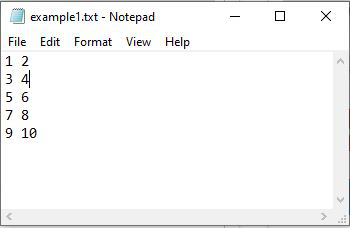
Python3
import numpy as np
File_data = np.loadtxt("example1.txt", dtype=int)
print(File_data)
|
Output :
[[ 1 2]
[ 3 4]
[ 5 6]
[ 7 8]
[ 9 10]]
Example 2: Importing text file into NumPy array by skipping first row
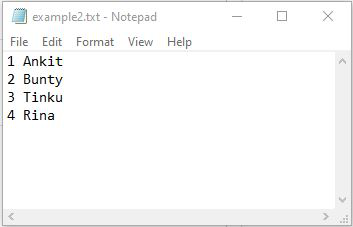
Python3
import numpy as np
data = np.loadtxt("example2.txt", skiprows=1, dtype='str')
print(data)
|
Output :
[['2' 'Bunty']
['3' 'Tinku']
['4' 'Rina']]
Example 3: Importing only the first column(Names) of text file into numpy arrays
The indexing in NumPy arrays starts from 0. Hence, the Roll column in the text file is the 0th column, Names column is the 1st column and the Marks are the 2nd column in the text file ‘example3.txt’.
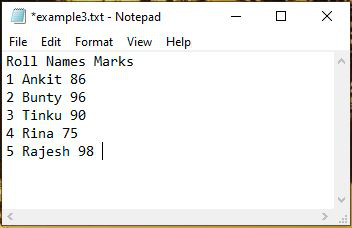
Python3
import numpy as np
data = np.loadtxt("example3.txt", usecols=1, skiprows=1, dtype='str')
for each in data:
print(each)
|
Output :
Ankit
Bunty
Tinku
Rina
Rajesh
Method 2 : numpy.genfromtxt()
Syntax :
numpy.genfromtxt(fname, dtype=float, comments=’#’, delimiter=None, skip_header=0, skip_footer=0, converters=None, missing_values=None, filling_values=None, usecols=None, names=None,excludelist=None, deletechars=” !#$%&'()*+, -./:;<=>?@[\\]^{|}~”, replace_space=’_’, autostrip=False, case_sensitive=True, defaultfmt=’f%i’, unpack=None, usemask=False, loose=True, invalid_raise=True, max_rows=None, encoding=’bytes’, *, like=None)
Except the fname(filename) in numpy.genfromtxt( ), all the other parameters are optional.
Example 1:
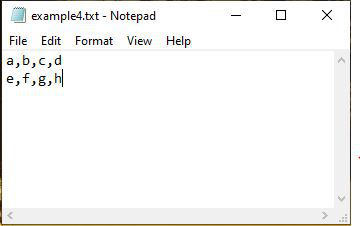
Python3
import numpy as np
Data = np.genfromtxt("example4.txt", dtype=str,
encoding=None, delimiter=",")
print(Data)
|
Output :
[['a' 'b' 'c' 'd']
['e' 'f' 'g' 'h']]
Example 2: Importing text file into numpy arrays by skipping last row
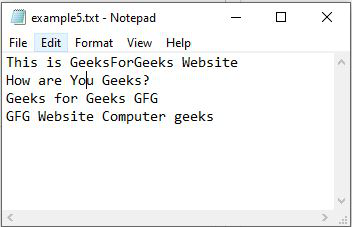
Python3
import numpy as np
Data = np.genfromtxt("example5.txt", dtype=str,
encoding=None, skip_footer=1)
print(Data)
|
Output :
[['This' 'is' 'GeeksForGeeks' 'Website']
['How' 'are' 'You' 'Geeks?']
['Geeks' 'for' 'Geeks' 'GFG']]
Share your thoughts in the comments
Please Login to comment...